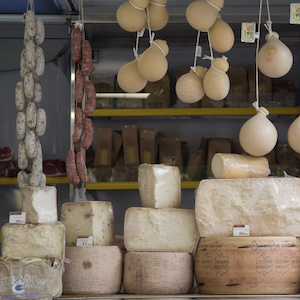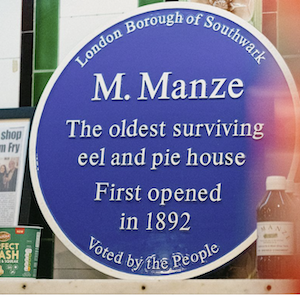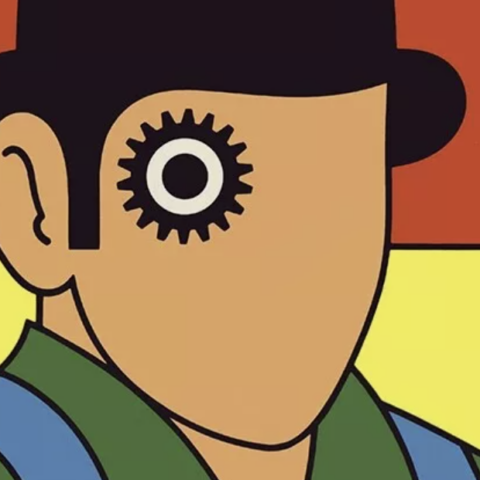Below the Surface
By Stacey Potts
It’s good to ask questions; it’s only natural. Say, for example, you are viewing the famous Mona Lisa in the Louvre Museum, you may well ask yourself, why is this work so important or maybe why does she have such a mysterious smile? Or, you’re eating at one of the finest restaurants, tasting the head chef’s special dessert but didn’t expect it to be say salty… When we question what we see or taste or even hear and experience it opens up our world into what lies behind every painting we see or plate we eat. Let’s look a little bit below the surface on creative process for better engagement.
Whilst acquiring tools of understanding in areas such as art and food, we are able to create our own personal journey through culture; this leads to our empowerment.
There is something so satisfying in being able to answer some of the questions that arise when you first view a piece of art or taste a new dish. This level of insight gives us a heightened experience like never before.
We’re providing ourselves with a window into the creative process as well as better experiences without an artist or chef to explain what we’ve just seen or consumed.
Recently, the National Galleries of Scotland put together a set of videos built around six of the most frequently asked questions relating to the world of arts. Each episode provides an answer to a question with the help of experts, visual diagrams and animations.
‘What makes an artwork iconic?’ Many of us may well ask this and one of the first videos takes on that burning question.
The video uses the Pop Art painting, In the Car as an example by Roy Lichtenstein. The image was taken originally from the comic book series ‘Girls’, an artwork that was scaled-up and enhanced by the artist, later becoming a pop-art classic.
Despite this being seen as an iconic work of art today, the piece brought about controversy both when it was created and auctioned. In 1963 Roy Lichtenstein took less than a year to paint In the Car and when first viewed, many artists saw it as a threat to the world of fine art.
Yet, it opened up a world of abstract art; bright bold contrasting colours, thick outlines and ‘Ben-day’ dots made it stand out and distinguish it amongst other works of traditional art.
Ben-day dots began during the 19th century from illustrator Benjamin Henry Day. Using colour dots spaced out they can be used as a way to put colour or shading on any artwork. Lichtenstein challenged the norm if what was seen as authentic artworks at the time and today his work is influential and has inspired across the creative industries from art, fashion and even music videos.
This video, along with the series were produced by the National Galleries of Scotland and can be watched on their YouTube channel. Other topics of discussion include:
What is Impressionism? – Art and Styles
Why can’t I touch art?
Why are there so few female artists?
Who decides what art is worth?
Just like the National Galleries of Scotland, in food, there is a range of tools to help you dive deeper. We all eat. Some like to cook, while some like to dine out. But for most of us, eating is luckily a multi-day experience. The internet today has also given us inside access to many cookbooks and how-to films on the internet.
With cookbooks on the shelf and how-to videos shown on the world wide web, there is one to mention that really goes beyond its book cover.
A book by the world-renowned chef, Ferran Adria, who is notoriously famous for his revolutionary cooking opens his newest publication with the question; ‘What is Cooking’.
As we know, food is an exciting part of the human experience, it brings routine to our day to day life – not to mention we simply can’t live without it. Adria breaks down the concept of food from ‘looking at why humans cook’ to ‘why the taste of food changes’ and how to elaborate a simple dish along with many other facets of the world of eating.
The book is a wonderful encyclopedia for those working in the catering industry, but also for the consumer who might want to try creating a gourmet dish at home. With multiple images that provide easy explanations and insights into his creative world, the book allows the reader to see past the presentation on the plate and understand the ingredients and the idea.

Take for instance, the language used with food. In chapter six, of What is Cooking? Adria has given a whole explanation on culinary resources explained in detail. For all to understand what we are doing in the kitchen we need to be able to differentiate and know what tools we are using in order to create the best dish we can possibly create.
An example, ‘The term ‘kitchen’ refers to the space in which we cook and ‘cooker’ means the appliance...’. Or the name when we begin to prepare food in the culinary process called ‘Mise en place’ (the preparation of dishes and ingredients before the beginning of service).

Having these resources can easily level up our precision and accuracy in producing a positive end result. In doing so, we can create a finishing piece of art on the plate.
Digging deeper into any topic whether it’s food or art is always better when there is information easily gathered and produced getting straight to the core of our question. This is the journey of empowerment and better engagement.
You can watch National Galleries of Scotland videos here on their YouTube channel.
Ready to find out more and have a few burning questions to find the answers to? Pre-order the book from Phaidon publishing company here.
If you enjoyed this piece, read all about food throwing you off balance. Don’t worry, you’ll enjoy the adventurous Power; Chamber Food.





